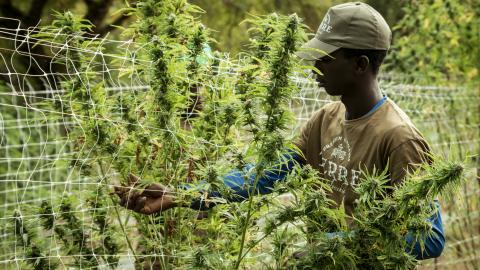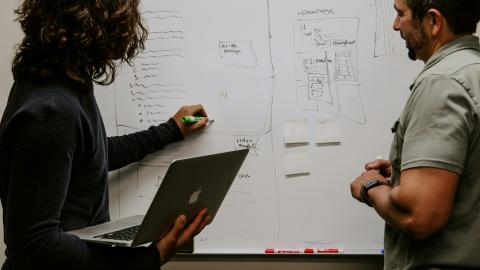
September 7, 2016
 Imagine a FitBit, or Apple Health App, that informs you about the space you are occupying throughout the day. If it told you you're breathing in something toxic on your way to work, would you change your route? If it found that your mood improves when you spend time outdoors, would you fit more walks into your day? This is what DEOHS Associate Professor Edmund Seto, PhD, MS, wants to discover.
Imagine a FitBit, or Apple Health App, that informs you about the space you are occupying throughout the day. If it told you you're breathing in something toxic on your way to work, would you change your route? If it found that your mood improves when you spend time outdoors, would you fit more walks into your day? This is what DEOHS Associate Professor Edmund Seto, PhD, MS, wants to discover.
Dr. Seto has created a soda can-size sensor intended to measure the exposure hazards present in individuals' daily lives, and heighten their awareness of their surrounding micro environments throughout the day. Dr. Seto wants to know if raising this awareness through his handheld devices would cause individuals to make healthy changes based on the data presented.

In an interview with HSNewsBeat Edmund said, "It's about collecting and giving people information about the hazards they face personally. Air pollution is something we all understand, but this could apply to any toxin, noise, and so on. You are willing to track yourself and understand something about your world, but would you change?"
Dr. Seto's low-cost sensors clip to your belt and are able to measure air quality, noise exposure, temperature, and physical activity as the individual wearing it goes throughout their day.
He also created a mobile app called CalFit featuring short surveys that pop up throughout the day. The app will ask users things like, "Just before the beep, how stressed were you feeling?" The multiple choice answers selected by users are then overlaid with information about their location, the time, and their activity to determine the environment's impact on their mood.

One of Dr. Seto's devices, the Personal University Washington Particle Monitor (PUWPM), is being used in a study of adult twins in Washington State. The study currently involves more than 8,800 sets of twins. Edmund and his team hope to discover how environmental factors impact differing health outcomes among two individuals with nearly identical genetics and similar upbringing. Researchers are measuring environmental exposures to air pollution and noise, and lifestyle behaviors, such as diet and physical activity, to determine the association between these environmental factors and health outcomes.

Wonil Lee, MS Student in Occupational and Environmental Exposure Science, has been working with Dr. Seto on a project to evaluate wearable personal sensors as a viable tool for improving construction workers' safety and health. As the graduate research assistant on the project, Wonil was involved in the proposal development phase, and has conducted data collection, analyzed data, and written journal and conference manuscripts.
"We recently tested usability and reliability of the wearable sensors (e.g., physiological status monitor and activity tracker) for work stressors, physiological reactions, and worker’s health behavior and lifestyle measurements. Based on the concept of Total Worker Health® (TWH) which integrates occupational health and safety with the promotion of workers’ off-duty wellbeing, we believe wearable sensors have facilitated personalized objective measurement of workers’ health and wellbeing", said Wonil.
"Among construction workers, roofing workers encounter high on-duty health and safety risks and have poor off-duty lifestyles. Thus our study has examined the reliability and usability of wearable sensors for monitoring roofing workers’ on-duty and off-duty activities."
The research team is also hoping to use the sensors to analyze construction workers' trunk posture. Work-related musculoskeletal disorders are common in the construction population, their current research uses laboratory conditions to evaluate the best sensor placement for assessing the risks of non-neutral trunk postures.
Wonil has an MS in Civil and Environmental Engineering, and is rounding out his skills with his academic work in occupational health and safety. Wonil is also a PhD Student in the UW College of Built Environments where he works with program advisor Ken-Yu Lin, PhD, MS. Dr. Lin is a co-primary investigator with Dr. Seto on this project.




